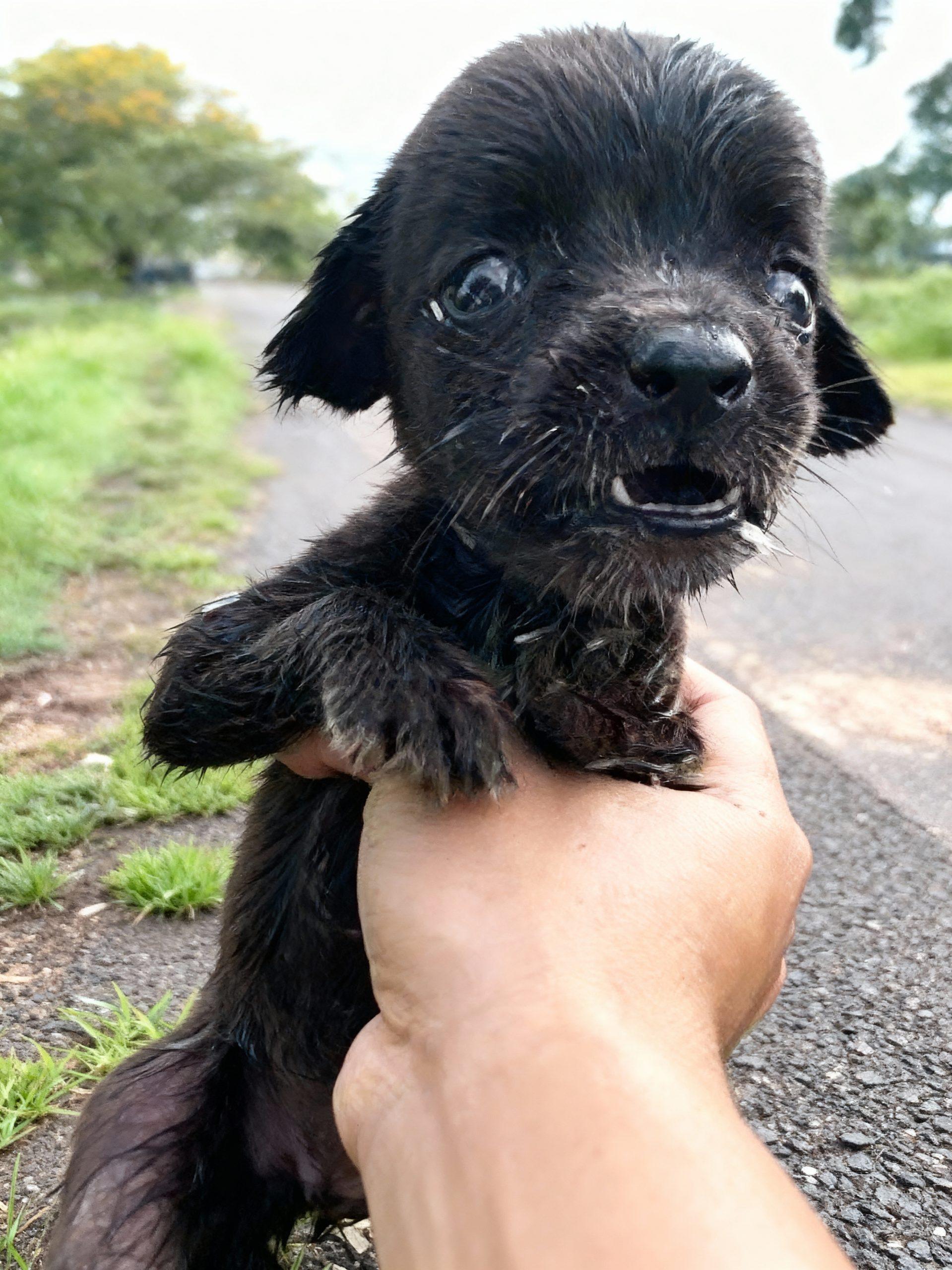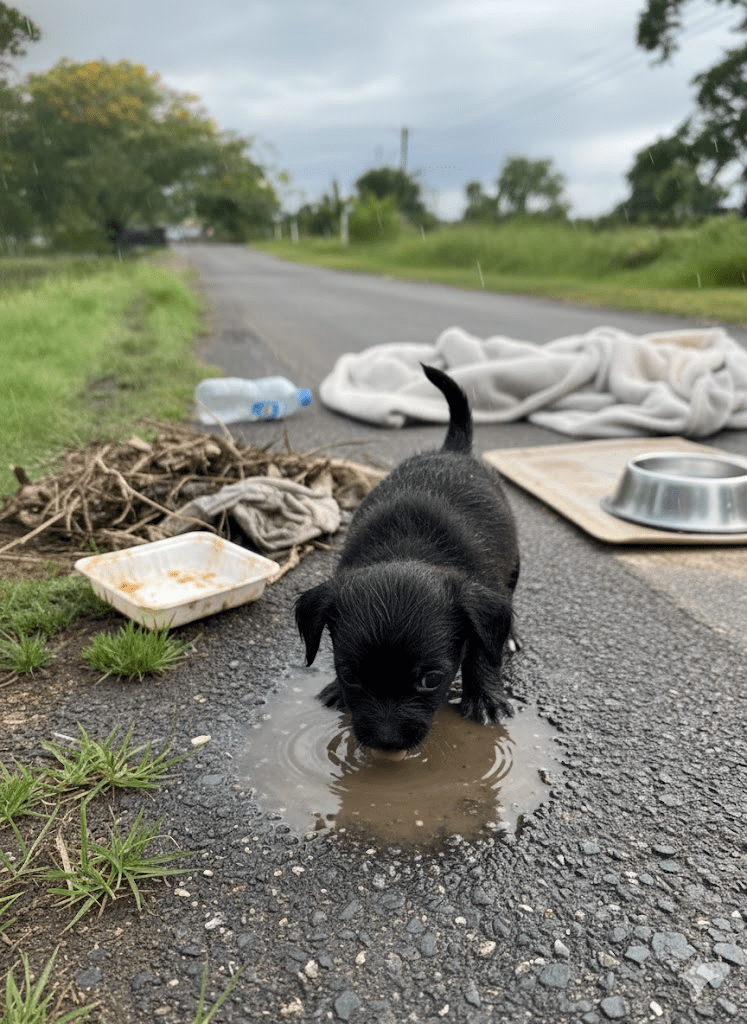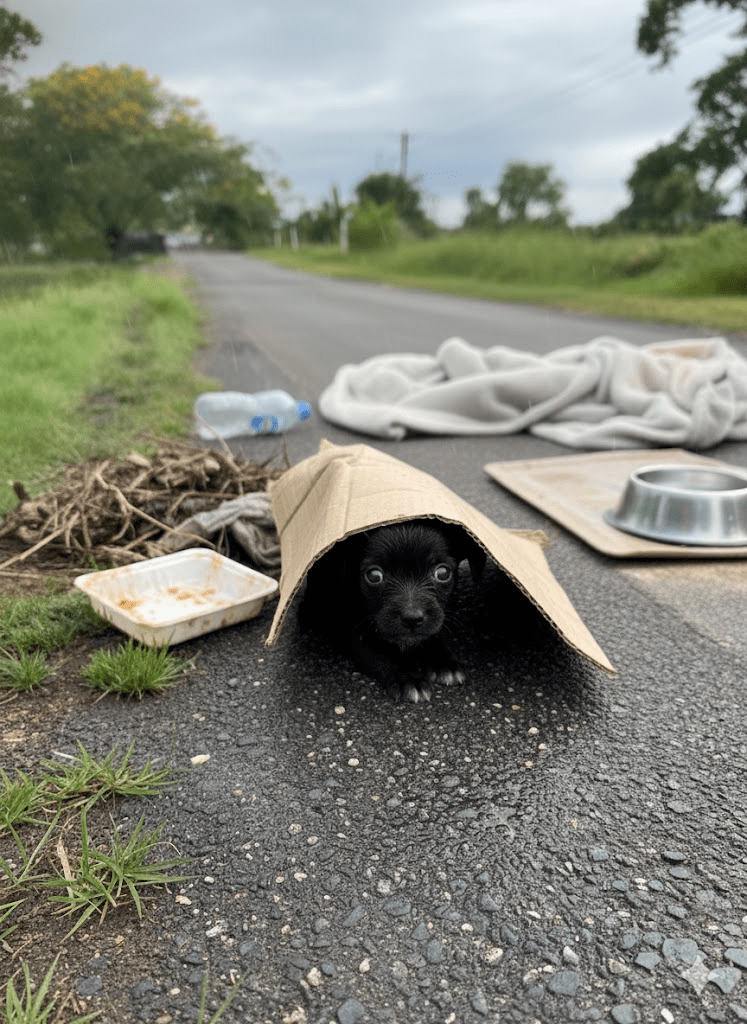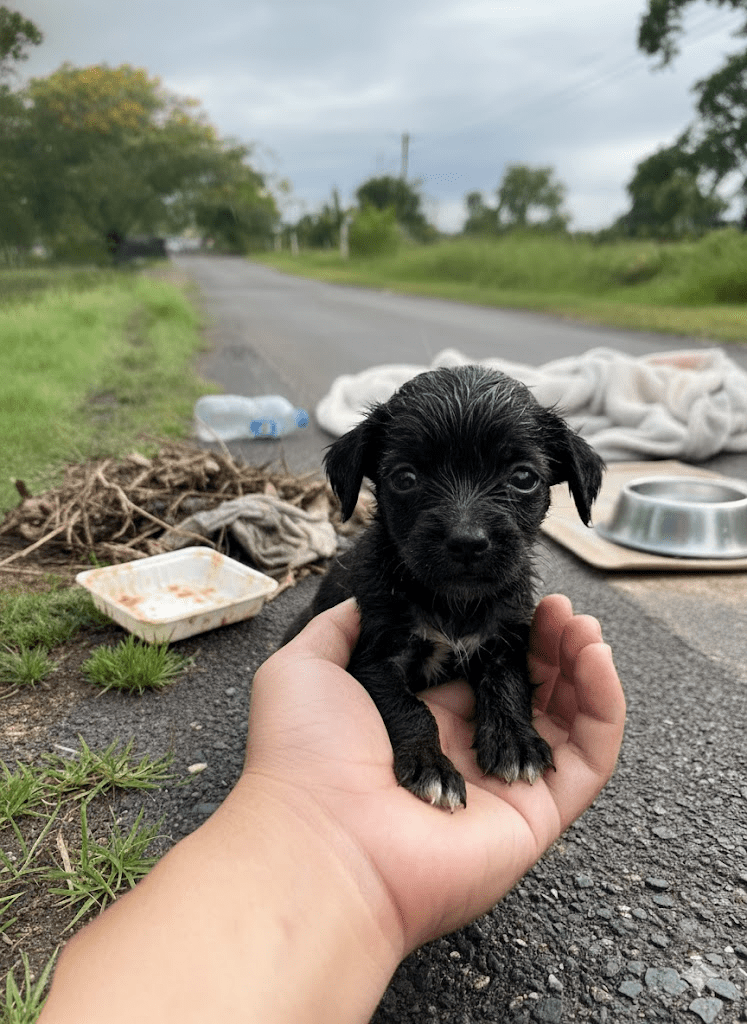The image before us tells a poignant story. A tiny, black puppy, no more than a few weeks old, is being held gently in a human hand. Its fur is wet and matted, its eyes wide with a mixture of fear and perhaps a glimmer of hope. The setting appears to be a rural road, suggesting this little one was found alone, vulnerable, and exposed to the elements. This single photograph encapsulates the harsh reality faced by countless stray animals worldwide – a reality of abandonment, struggle, and the constant fight for survival. It prompts us to consider the immense challenges these innocent creatures endure from their very first breath, often without the warmth of a mother’s care or the security of a safe home. This particular puppy, with its small, frail body and questioning gaze, serves as a powerful reminder of the profound responsibility we, as humans, bear towards the animals that share our world, especially those left to fend for themselves on the streets. Its presence in that outstretched hand signifies a moment of intervention, a potential turning point from a life of hardship to one of safety and love.

The life of a stray animal begins with an immediate struggle for basic necessities. Unlike pets born into loving homes, these puppies often face hunger from day one, their tiny stomachs rumbling with emptiness. They lack consistent access to clean water, relying on puddles or whatever moisture they can find. The absence of a secure den or shelter means they are constantly exposed to the elements – scorching sun, chilling winds, and relentless rain, much like the wet fur on the puppy in the initial image suggests. This exposure takes a significant toll on their developing bodies, making them susceptible to hypothermia, dehydration, and a myriad of illnesses. Without a mother’s milk, their immune systems are weak, leaving them vulnerable to every pathogen in their environment. The very act of finding food becomes a dangerous quest, forcing them to scavenge in hazardous areas, increasing their risk of injury from traffic or confrontation with other animals.

Beyond the immediate physical dangers, stray puppies also confront a constant threat of violence and cruelty. Humans, unfortunately, are not always kind, and some individuals view stray animals as pests, subjecting them to abuse or neglect. Other animals can also pose a threat, as older or stronger strays may compete for resources, leading to fights that can severely injure or even kill a vulnerable puppy. The absence of a protective maternal figure leaves them defenseless, forcing them to learn survival skills at an incredibly young age. Every sound, every movement, becomes a potential danger, instilling a deep sense of fear and anxiety. This constant state of alert, evident in the wide, apprehensive eyes of our featured puppy, can have lasting psychological impacts, making it difficult for them to trust and bond with humans even if they are eventually rescued.

Access to veterinary care is a luxury most stray puppies will never experience. This means they are often plagued by preventable diseases and parasites that, left untreated, can become fatal. Worm infestations, fleas, ticks, and mange are common afflictions that cause immense discomfort and weaken their already fragile systems. Furthermore, unvaccinated strays are highly susceptible to deadly viruses like distemper and parvovirus, which can wipe out entire litters. The lack of medical intervention ensures that even minor injuries can become infected and life-threatening. The cycle of suffering continues, as sick and weak puppies are less able to forage for food or escape danger, perpetuating their perilous existence on the streets.

The psychological toll of a stray existence is profound. Puppies, by nature, are meant to be playful, curious, and trusting. However, constant exposure to danger and neglect can stunt their emotional development. They often become withdrawn, fearful, or even aggressive as a defense mechanism. Socialization with humans and other animals is crucial during their early weeks, shaping their behavior and temperament for life. Without it, stray puppies may struggle to adapt to a domesticated environment, even if they are eventually rescued. The lack of stable relationships and consistent care can lead to deep-seated insecurities, making it challenging for them to form attachments and experience the unconditional love they inherently deserve.







